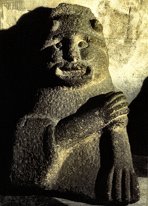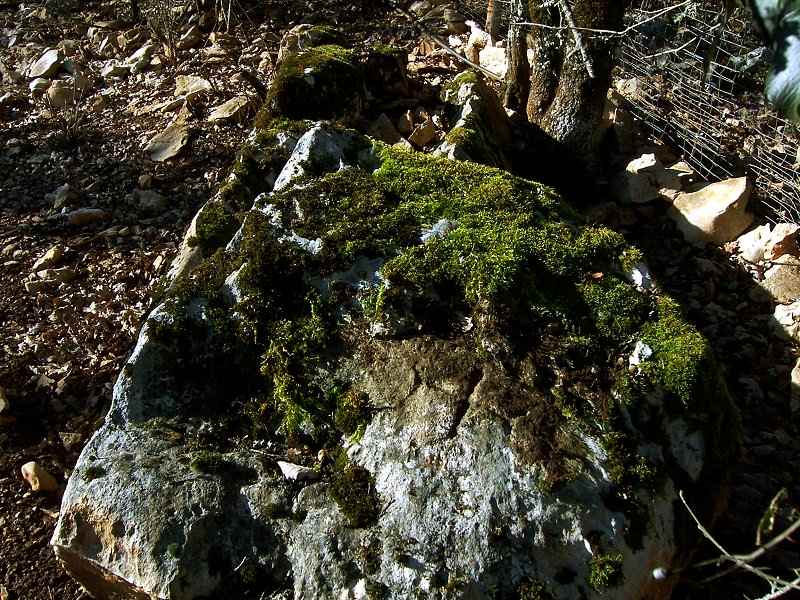|
the
earth-mother's
|
![]()
AN ENGRAVED STONE IN CANADA
Click on the photo to enlarge.

The engraving close up.
|
Anyone familiar with Early Christian Irish art might assume that this is an engraved boulder at a Christian or Christianised site in Ireland. Indeed, there is a very fine cross-engraved boulder (with ogam incriptions) at Maumanorig, near Dingle in county Kerry. click on the picture to enlarge
Quatrefoils also appear on the more common Irish grave-slabs, which were laid flat above the grave of a monk. This fragment has been 'made whole' with the use of concrete.
The fact that the points of the quatrefoil correspond with the cardinal points does not help. Scandinavians certainly reached Canada, after discovering Iceland and then Greenland. But, according to the Íslendingabók, Irish monks are alleged to have arrived on Iceland before the Scandinavians. There is absolutely no corroboration of this, nor has any Irish cross-slab or cross-pillar turned up in Iceland, which would be very curious if there had been a monastic settlement there. Irish monks had a passion for engraving stones with cross-designs, some of them highly abstract, as these pages illustrate. Might Irish monks, not having ever gone to Iceland, actually sailed more directly and lengthily across the Atlantic to reach the St Lawrence river ? Only the discovery of an ogam inscription or the remains of a circular stone cell would confirm that hypothesis. In the meantime, we can only speculate. The boulders in the Parc des Rapides are not in their original place, as the letter below confirms.
A Breton origin, whether at the time the cod-fisheries off Eastern Canada were discovered, or before the time of Columbus, seems very unlikely. Rock-engravings from historical times are rare in France - although there is one megalithic tomb near Saint-Antonin-Noble-Val (Tarn-et-Garonne) which has been Christianised with the simple expanded Greek cross of a type found both in Ireland (e.g. the Maumanorig stone, above) and in the Eastern Mediterranean. Dolmen de Clauzel, St-Antonin-Noble-Val.
Forums where the carving is discussed:
http://www.arbre-celtique.com/forum/viewtopic.php?f=4&t=1597 |
![]()




